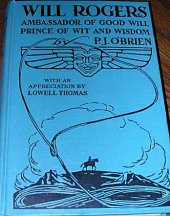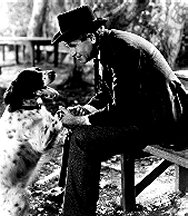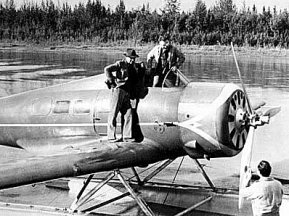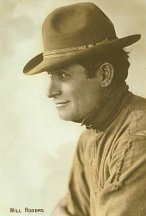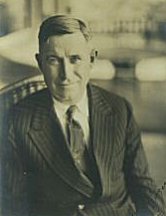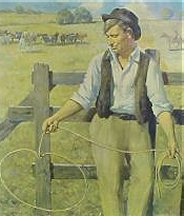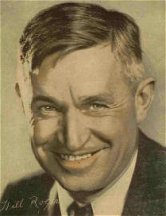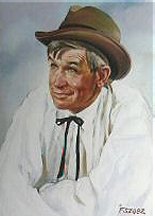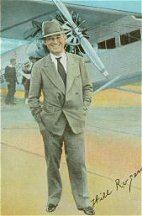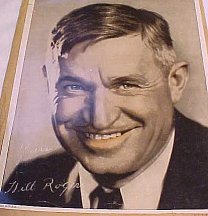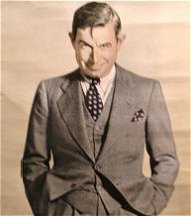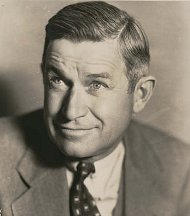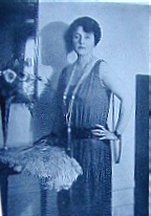 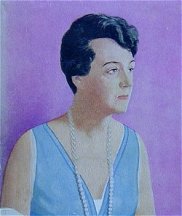 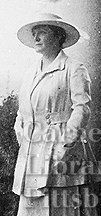 Mary
Roberts Rinehart: was born in Pittsburgh. US novelist, playwright.
She is best known for her mystery stories about Miss Pinkerton; originator
of the phrase "The butler did it." Apart from crime fiction she also
wrote plays, comic stories, and love stories. Mary
Roberts Rinehart: was born in Pittsburgh. US novelist, playwright.
She is best known for her mystery stories about Miss Pinkerton; originator
of the phrase "The butler did it." Apart from crime fiction she also
wrote plays, comic stories, and love stories.
Mary Roberts
Rinehart 1876-1958
Mary Ella Roberts was born on August 12,1876 near Pittsburgh,
Pennsylvania. Her parents, Tom and Cornelia were still living in his mother's
house with five other family members. Shortly after her sister OLIVE was
born, they moved into a home of their own just down the street. At
fifteen, her career was foreshadowed when she had three short stories published
in a local magazine for a dollar each. When she was seventeen, she
applied to nursing school and also met a young doctor by the name of Stanley
Marshall Rinehart. They married when she was nineteen. Mary found
herself in the role of homemaker and a baby boy was soon on the way. Stanley
Jr. was born in 1897. Her second son, Alan, arrived in 1900 and her
third son, Ted, was born in 1902. One of the side effects of her
pregnancies was constant nausea and she became very weak. Dr. Rinehart's
half-brother, head of the hospital where she had been a nurse decided
to try to feed her broiled lobster, bits at a time. By miracle this stayed
down. This experience with lobsters served her well when she came to Bar
Harbor. She had always loved to write and had many short stories published
in magazines but she was too busy to do any serious writings. However,
when the Rineharts suffered a $12,000.00 loss in the stock market, Mary
began writing more to help out financially. Mary had also tried at writing
plays. A few were Broadway hits, like Seven DAYS and The Bat. There were
a few others that just did not make it.World War I affected Mary's life
tremendously. She consented to go to England as a war correspondent for
the Saturday Evening Post in January of 1915. England was full of journalists
and Mary wanted to get to the front but her contacts told her there
was nothing they could do to help. She then convinced the Belgian Red Cross
to give her the proper credentials she needed and she promised to make
the American people aware of the horrible conditions at the Belgian front.
In 1921, her husband, Stanley Rinehart was appointed as a medical consultant
to the Veteran's Bureau, so, they moved to Washington D.C.. They were soon
caught up in the social and political scenes. Dr. Rinehart having grown
frustrated with his government job and having arthritis which kept him
from practicing surgery, resigned to open a private practice specializing
in tuberculosis. Mary's latest book at the time, Lost Ecstasy, a romance,
was very successful. Hollywood paid her $15,000.00 for the movie rights.
I Take This Woman, starring Gary Cooper and Carole Lombard was released
in 1931. Stanley Jr. and Ted, along with a friend John Farrar, started
their own publishing company in 1929 and Mary Roberts Rinehart was one
of their first authors. Dr. Rinehart handled the finances since Mary
had a tendency to spend easily. She had invested in some ventures unwisely
and the Crash of 1929 had hit them hard. Stanley blamed himself and Mary
thought this aided in his declining health over the next few years. Dr.
Rinehart died in 1932 with his family by his side. Mary continued
to live in their Washington home, alone except for a few servants. One
of these was Reyes, the Filipino cook, who always considered Dr.
Rinehart his boss and was somewhat uneasy about taking orders from a woman-this
attitude was to have bizarre consequences later. In 1934 Mary suffered
a heart attack. This left her heart weak and she was mostly unable to climb
stairs and get around her big house. She also missed the rest of
the family. In 1935, she moved to an apartment in New York City.
The Rineharts had been spending their summers at a ranch out west or vacationing
in Florida or renting beach houses on the northeast coast. She was
looking for a new summer place. She first came to Bar Harbor in 1935 and
rented a cottage attached to one of the hotels. In 1936, she rented a house
and in 1937 decided to buy Farview. This purchase gave Mary a new interest.
Bar Harbor in 1937 was changing from the carefree life of earlier days.
The beautiful sea, the mountains, and big cottages were still there but
a lot of the large homes were for sale. Her 1945 book, The Yellow
Room was in a Bar Harbor-like setting. In the summer of 1938 Mary had a
lot of construction and landscaping done. The house was built around an
open courtyard with a reflecting fish pond. High on a hill, the view of
the bay was breathtaking. She moved into the house in 1939. She furnished
it in light pastel colors and colorful upholstery. She had the architect
put in a low-silled picture window in her bedroom so she could lie in bed
and still see the water and islands. In 1938, Mary finished her fortieth
book, The Wall, set in a disguised Bar Harbor filled with intrigue, murders
and a love story. She considered this one of her best novels. The Saturday
Evening Post agreed and paid her $65,000.00 for the serial rights. She
had just finished it when, unfortunately, she had her most severe heart
attack, putting her on oxygen for a time and nitroglycerine for the rest
of her life. Mary, now in her mid-sixties was slowing down. She had just
four books, along with some short stories and magazine articles during
the war years of 1940-46. Her summers in Bar Harbor were now filled with
friends, dinner parties and social events as her health improved. Her son
Alan was recovering from pneumonia one year and the two of them would
go sit in the sun at the top of Cadillac Mountain.The absence of her husband's
handling of the finances were felt from time to time and at one point even
put Farview up for sale. She could not let go of any of her servants. Farview
was large and it was hard to find maids. She then hired a butler
in the summer of 1947 and her Filipino cook, Reyes, was not happy about
it. He had been with the Rineharts for 25 years and he was always highly
praised for his skills. One day, Reyes, told Mary he was leaving. She was
used to hearing this from him and paid it no mind. The next day,
Mary found his wife,Peggy, a maid, crying. Peggy said Reyes had been drinking
the night before and they had a fight when she refused to leave with him.
Mary was reading in the library before lunch when Reyes came in. They spoke
a few words when he pulled a gun from his pants pocket and
pulled the trigger within point blank range of her face. Luckily, the gun
misfired. He tried again and Mary leapt to her feet and ran. She entered
the kitchen, Peggy, and Theodore Falkenstrom, her chauffeur, saw what
was happening. Ted tackled the cook and grabbed the gun. Peggy ran
to get the breathless Mary a nitroglycerine tablet and Ted went and threw
the gun over a garden wall. The butler ran down the street to get
help thinking he was the intended victim. As Mary was in the hall on her
way to phone the police, she saw a young man standing outside the door.
The boy said he was looking for a job as a gardener's assistant. "Young
man," Mary said, "you'll have to come back later. There is a
man here trying to kill me." The boy never returned.As
Mary stood at the phone, again in the library, Reyes came up behind her
wielding a long carving knife in each hand. Ted and the gardener came running
in and again knocked him down. Peggy sat on his chest,and Ted held his
arms getting cut by the flailing knives. Finally, the police arrived and
took Reyes away. Mary's son Alan flew up that night to be with his mother.
The next morning he gave her the news that Reyes had hung himself
in his jail cell. A Catholic priest allowed him to be buried in sacred
ground since he was "Plainly of unsound mind." Mary had no anger
against the long-time cook and paid for his funeral After all
this, there was still more in store for Mary Roberts Rinehart and the town
of Bar Harbor. The summer was very hot and dry, and in October a small
grass fire turned into an inferno. More than 17,000 acres and almost 250
houses burnt including Mary's Farview.She wrote several more books, including
a private memoir for her children before she succumbed to a final heart
attack in 1958. While she lived in Bar Harbor the latter part of
her life, her presence there has never left. Farview is located on
Eden Street where the Wonder View Inn is now located. Still, the view from
the hilltop is breathtaking and the grounds beautiful.
Bibliography |

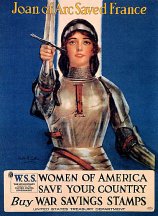
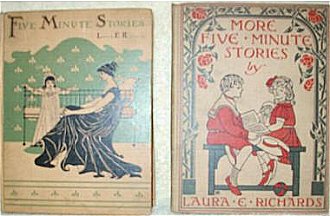
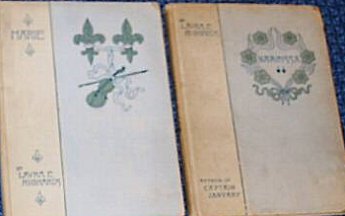
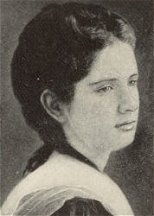 Laura
E. Richards (1850-1943), one of Gardiner, Maine's two Pulitzer Prize-winning
authors, was born in Boston to eminent parents, Dr. Samuel Gridley Howe,
founder of the Perkins School for the Blind; and Julia Ward Howe, social
reformer and lyricist of the "Battle Hymn of the Republic." In 1871, she
married Henry Richards (1848-1949), architect and industrialist, who returned
to Gardiner, Maine in 1876 to manage the family paper mills.Here she wrote
more than ninety works, mostly in the fields of children's literature and
biography, at the family's celebrated residence, the Yellow House. Following
the example of her parents, Mrs. Richards brought about social reforms
and civic improvements in Gardiner including the introduction of safe drinking
water, the public health nurse, the hospital, the Red Cross, a new high
school, and numerous serice organizations, including the Gardiner Public
Library. Her permanent contribution to world literature, in the opinion
of the Oxford anthology series editors, was that of nonsense verses, including
perennial favorites such as "Little John Bottlejohn," "Eletelephony," and
"The Poor Unfortunate Hottentot" - verses which "seemed to bubble up from
some spring of nonsense" in her own words. Her first publication was a
book of nonsense verses, Sketches and Scraps (1881). Other collections
included In My Nursery (1890), The Hurdy-Gurdy (1902), The Piccolo (1906),
and her final anthology which was in print until a decade ago, Tirra Lirra
(1932). As her own children grew up, she wrote short stories which interested
them. These juvenile books appeared as the Margaret Monfort series, the
Hildegarde series, and others. Captain January (1890), a best seller, was
twice made into movies, and the second time starred Shirley Temple. Among
her adult nonfiction works were a two-volume
biography of her father, Letters and Journal of Samuel Gridley Howe (1906-09);
a joint biography of her parents, Two Noble Lives (1911); and, most importantly,
the two-volume biography of her mother, Julia Ward Howe (1915), the first
biography to be honored by the Pulitzer Prize. In her own estimation, her
best works were two books of fables, The Golden Windows (1903) and The
Silver Crown (1906). In her autobiography, Stepping Westward (1931) she
recalls her other important work: the founding of the third boy's camp
in the nation, Camp Merryweather, whose campers grew up to become national
leaders and her literary mentorship of Gardiner's other Pulitzer Prize
winner, Edwin Arlington Robinson (1869-1935)."
Laura
E. Richards (1850-1943), one of Gardiner, Maine's two Pulitzer Prize-winning
authors, was born in Boston to eminent parents, Dr. Samuel Gridley Howe,
founder of the Perkins School for the Blind; and Julia Ward Howe, social
reformer and lyricist of the "Battle Hymn of the Republic." In 1871, she
married Henry Richards (1848-1949), architect and industrialist, who returned
to Gardiner, Maine in 1876 to manage the family paper mills.Here she wrote
more than ninety works, mostly in the fields of children's literature and
biography, at the family's celebrated residence, the Yellow House. Following
the example of her parents, Mrs. Richards brought about social reforms
and civic improvements in Gardiner including the introduction of safe drinking
water, the public health nurse, the hospital, the Red Cross, a new high
school, and numerous serice organizations, including the Gardiner Public
Library. Her permanent contribution to world literature, in the opinion
of the Oxford anthology series editors, was that of nonsense verses, including
perennial favorites such as "Little John Bottlejohn," "Eletelephony," and
"The Poor Unfortunate Hottentot" - verses which "seemed to bubble up from
some spring of nonsense" in her own words. Her first publication was a
book of nonsense verses, Sketches and Scraps (1881). Other collections
included In My Nursery (1890), The Hurdy-Gurdy (1902), The Piccolo (1906),
and her final anthology which was in print until a decade ago, Tirra Lirra
(1932). As her own children grew up, she wrote short stories which interested
them. These juvenile books appeared as the Margaret Monfort series, the
Hildegarde series, and others. Captain January (1890), a best seller, was
twice made into movies, and the second time starred Shirley Temple. Among
her adult nonfiction works were a two-volume
biography of her father, Letters and Journal of Samuel Gridley Howe (1906-09);
a joint biography of her parents, Two Noble Lives (1911); and, most importantly,
the two-volume biography of her mother, Julia Ward Howe (1915), the first
biography to be honored by the Pulitzer Prize. In her own estimation, her
best works were two books of fables, The Golden Windows (1903) and The
Silver Crown (1906). In her autobiography, Stepping Westward (1931) she
recalls her other important work: the founding of the third boy's camp
in the nation, Camp Merryweather, whose campers grew up to become national
leaders and her literary mentorship of Gardiner's other Pulitzer Prize
winner, Edwin Arlington Robinson (1869-1935)."
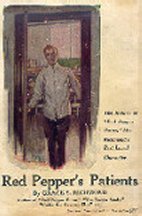
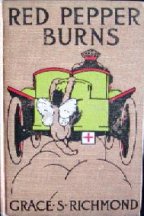
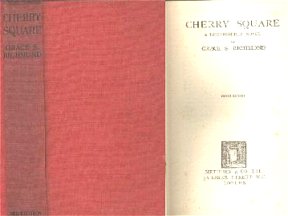
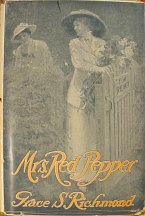
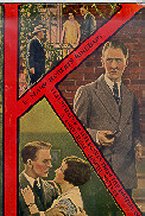
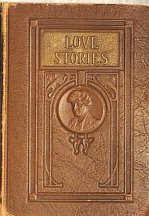
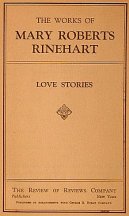


 Mary
Roberts Rinehart: was born in Pittsburgh. US novelist, playwright.
She is best known for her mystery stories about Miss Pinkerton; originator
of the phrase "The butler did it." Apart from crime fiction she also
wrote plays, comic stories, and love stories.
Mary
Roberts Rinehart: was born in Pittsburgh. US novelist, playwright.
She is best known for her mystery stories about Miss Pinkerton; originator
of the phrase "The butler did it." Apart from crime fiction she also
wrote plays, comic stories, and love stories.
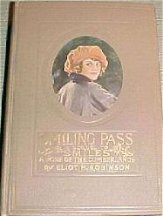
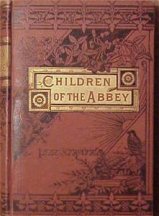
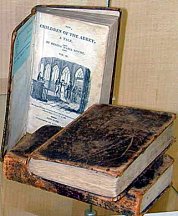
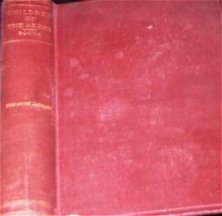
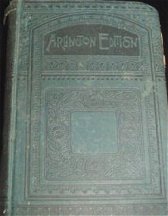
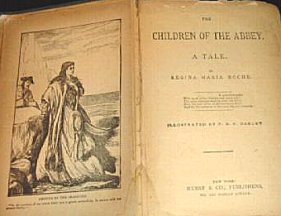
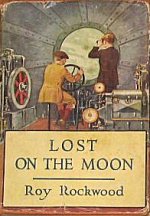
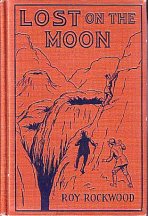
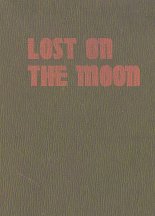
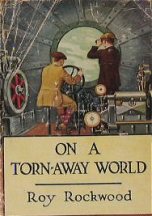
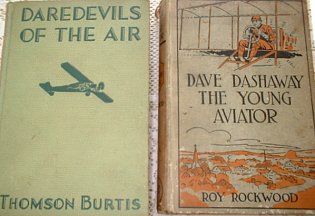
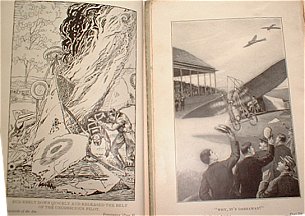
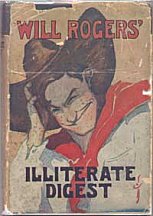
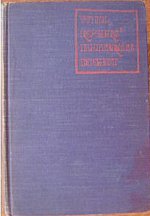

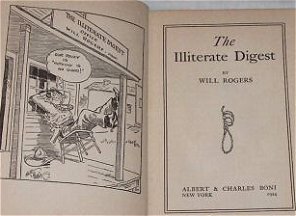
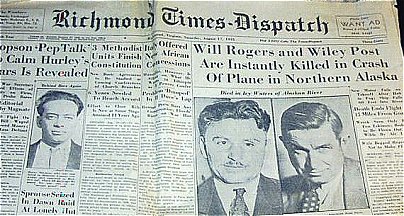 Richmond
Times Dispatch daily newspaper: Richmond, Virgina ~ Saturday, August 17,
1935. Headline: Will Rogers and Wiley Post are instantly killed in crash
of plane in Northern Alaska.~ Died in Icy Waters of Alaska River" Other
stories featured: "The rope that started Will's career - It was the
cowboy-humorist's skill with a rope that started him on the raod to fame
when he got his first job as rope-twirler with a medicine show." "World
Leaders Are Shocked By Deaths of Rogers, Post." "Off to Battle the
Stratosphere" - clad in an oxygen helmet, Post in the "Winnie Mae" tried
for an altitude record in 1934. He beat the old but not sufficient
to be allowed a new." "They Lived and Died the Best of Pals."
"As the Film Fans Knew Him - In just such homey roles as this one,
Will endeared himself to the moviegoers with his true characterizations."
Richmond
Times Dispatch daily newspaper: Richmond, Virgina ~ Saturday, August 17,
1935. Headline: Will Rogers and Wiley Post are instantly killed in crash
of plane in Northern Alaska.~ Died in Icy Waters of Alaska River" Other
stories featured: "The rope that started Will's career - It was the
cowboy-humorist's skill with a rope that started him on the raod to fame
when he got his first job as rope-twirler with a medicine show." "World
Leaders Are Shocked By Deaths of Rogers, Post." "Off to Battle the
Stratosphere" - clad in an oxygen helmet, Post in the "Winnie Mae" tried
for an altitude record in 1934. He beat the old but not sufficient
to be allowed a new." "They Lived and Died the Best of Pals."
"As the Film Fans Knew Him - In just such homey roles as this one,
Will endeared himself to the moviegoers with his true characterizations."
